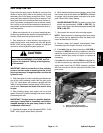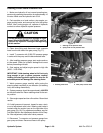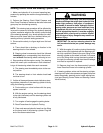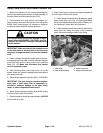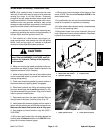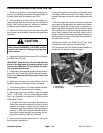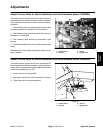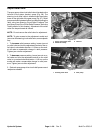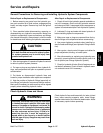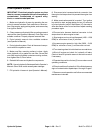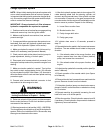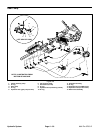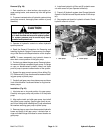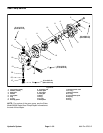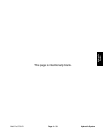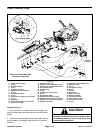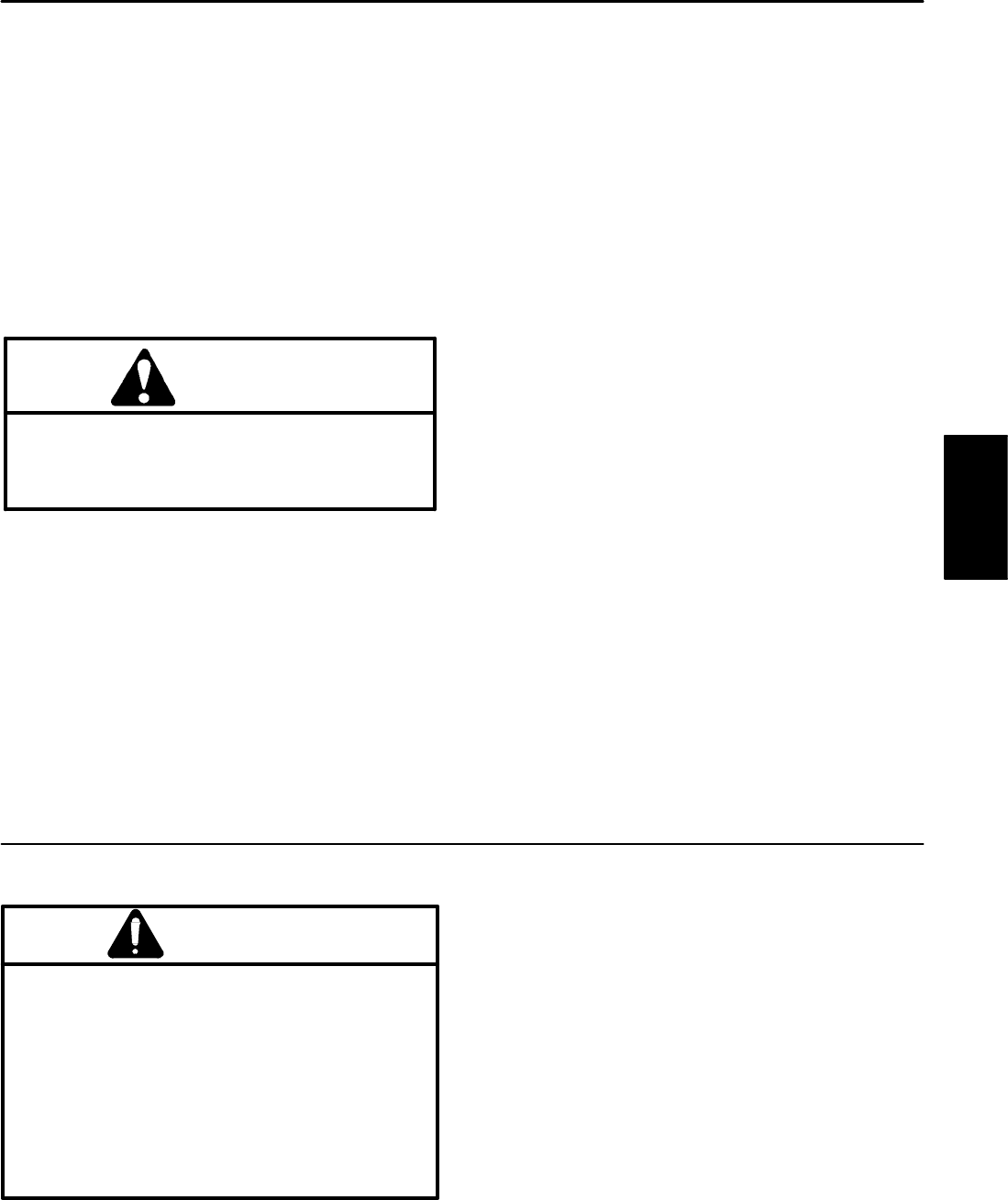
Service and Repairs
General Precautions for Removing and Installing Hydraulic System Components
Before Repair or Replacement of Components
1. Before removing any parts from the hydraulic sys-
tem, park machine on a level surface, engage parking
brake, and stop engine. Remove key from the ignition
switch.
2. Clean machine before disconnecting, removing, or
disassembling any hydraulic components. Make sure
hydraulic components, hoses connections, and fittings
are cleaned thoroughly. Always keep in mind the need
for cleanliness when working on hydraulic components.
CAUTION
Rotate steering wheel and depress traction ped-
al in both forward and reverse to relieve hydrau-
lic system pressure and to avoid injury from
pressurized hydraulic oil.
3. After turning engine off, operate all hydraulic controls
to relieve hydraulic system pressure.
4. Put caps or plugs on any hydraulic lines, hydraulic fit-
tings, and components left open or exposed to prevent
contamination.
5. Put labels on disconnected hydraulic lines and
hoses for proper installation after repairs are completed.
6. Note the position of hydraulic fittings (especially el-
bow fittings) on hydraulic components before removal.
Mark parts if necessary to make sure they will be aligned
properly when reinstalling hydraulic hoses.
After Repair or Replacement of Components
1. Check oil level in the hydraulic reservoir and add cor-
rect oil if necessary. Drain and refill hydraulic reservoir
and change oil filter if component failure was severe or
system is contaminated (see Flush Hydraulic System).
2. Lubricate O–rings and seals with clean hydraulic oil
before installing hydraulic components.
3. Make sure caps or plugs are removed from the hy-
draulic fittings and components before reconnecting.
4. Use proper tightening methods when installing hy-
draulic hoses and fittings (see Hydraulic Fitting Installa-
tion).
5. After repairs, check control linkages and cables for
proper adjustment, binding, or broken parts.
6. After disconnecting or replacing any hydraulic com-
ponent(s), operate machine functions slowly until air is
out of system (see Charge Hydraulic System).
7. Check for hydraulic oil leaks. Shut off engine and cor-
rect leaks if necessary. Check oil level in hydraulic reser-
voir and add correct oil if necessary.
Hydraulic
System
Check Hydraulic Lines and Hoses
or nozzles that eject hydraulic fluid under high
jected into the skin, it must be surgically re-
WARNING
Keep body and hands away from pin hole leaks
pressure. Use paper or cardboard, not hands, to
search for leaks. Hydraulic fluid escaping under
pressure can have sufficient force to penetrate
the skin and cause serious injury. If fluid is in-
moved within a few hours by a doctor familiar
with this type of injury. Gangrene may result from
such an injury.
Check hydraulic lines and hoses daily for leaks, kinked
lines, loose mounting supports, wear, loose fittings,
weather deterioration and chemical deterioration. Make
all necessary repairs before operating.
Multi Pro 5700–D Page 4 – 27 Hydraulic System



